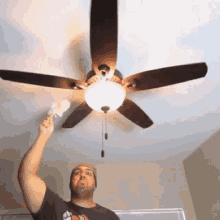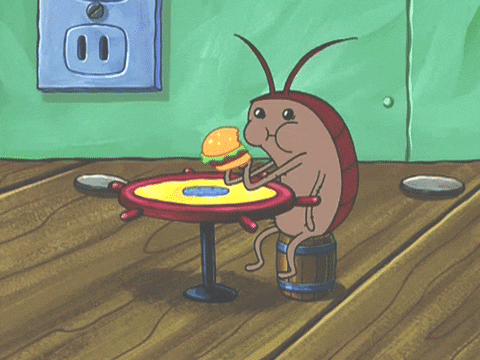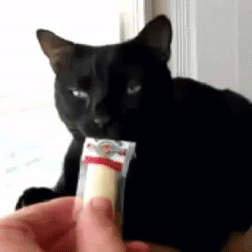[SURVEY RESULTS] Do you clean your house more than the average Msian? Results are in!

- 5.3KShares
- Facebook5.1K
- Twitter17
- LinkedIn11
- Email36
- WhatsApp108
Some time ago, this writer was coughing his lungs out cleaning his dusty room and said “Haish… So mafan… Can’t I just live in this filth?”

So he wondered if other people were also struggling with their chores while thinking the same thing. Lucky for us, our friends at Coway jumped on board to help us come up with the Bersih Lebih survey, where we asked Malaysians to tell us all of their deep, dark secrets when it comes to their cleaning habits.
Before we get to the dirty details, here’s some prelim info about our respondents:
- A whopping 2,752 people took the survey! Thank you we love you so much <3 <3 <3
- More women (77.4%) than men (21.1%) answered our survey, while the remaining 1.5% chose ‘others’.
- We have people from all age groups, but most (43.3%) are between 25 to 34 years old.
- Besides English speakers (77%), the other languages spoken by our respondents are Malay (44%), Chinese dialects (22%), Indian dialects (12%), and others (4%).
- Most of our respondents came from Selangor (38%) and KL (20%), but we’ve got respondents from every state… and even overseas!
Now that that’s over with, let’s share the tea survey findings, starting with something fun…
1. The most hated chore in Malaysia is… cleaning fans

There’s always some chores you like doing more than others. We presented our respondents with a list of chores and asked them to pick their top three favorites, and…
- 51% like to sweep/vacuum their floors,
- 44.3% like to do laundry, and
- 42.9% like washing dishes.
When we compared their preferences by gender, significantly more men prefer taking out the trash and cleaning the fans, while more women prefer making the bed, tidying up the house, and cleaning the fridge.

But what about the most hated chore? Well…
- 47% hate dusting and cleaning fans,
- 43.2% hate cleaning the toilets/bathrooms, and
- 36.3% hate mopping/scrubbing the floors.
And what about how often we do basic chores? Most of our respondents:
- sweep/vacuum the floor at least once a week (85.5%),
- change their towels once a week (53.1%), and
- change their bedsheets/pillow covers/comforters once a month (47.7%).
There are of course the outliers – 7.2% of people sweep/vacuum their floors once a month or less, 1.3% change their towels less than once a year, 2.2% of people change their bedsheets less than once a year, and 0.4% don’t even know that they’re supposed to change their sheets! So if you know 250 people, at least 1 never ever change their bedsheets. Eww…
2. Perlis people spend the most time cleaning
How many hours do Malaysians spend cleaning their houses each week? Based on our respondents’ answers, Malaysians spend roughly 2 hours and 26 minutes, but that’s the national average lah. Here are the outliers:
- 5.4% claim they spend more than 8 hours every week cleaning,
- 10% claim they spend less than half an hour weekly, and
- 8.9% don’t clean at all, or have a maid or someone else do that for them.

We also calculated the average time people from each state clean weekly, and people from Perlis top the list, spending 3 hours and 28 minutes. This is followed by Kelantan people (2 hrs 56 min) and Kedahans (2 hrs 54 mins). On the opposite end of the spectrum, Penangites on average seem to clean the least, clocking in just 1 hour and 56 minutes.
And just for fun, we calculated how much time on average our men and women respondents spent cleaning, and… it appears that women spend 33% more of their time (roughly 2 hrs 34 mins) cleaning than men do (1 hour 55 mins). And for other genders, the average time is 2 hours 16 mins per week.
Speaking of extra time for chores, we also asked our respondents how their cleaning habits have changed following the pandemic. Many have taken extra precautions against bringing in germs and dirt from the outside, with 59.1% washing their hands as soon as they return home, 43.4% changing out of their outdoor clothes, and 36.6% taking a shower upon returning home.

As for extra cleaning habits, while 28% didn’t add any new chores to their list, others have started…
- opening windows/doors to increase ventilation (41%)
- cleaning more regularly (38.9%)
- wiping down surfaces with sanitizer (35%)
- installing an air purifier (15.2%)
Ehh, air purifier as a precaution against C-19 viruses? Well, some of them can actually help, provided their filters are equipped with some manner of virus deactivating material, like Coway’s new Double HEPA filter. More on that later, but moving on with our next finding…
3. Penangites are the most bangga about their homes

Time for some self introspection! When we asked our respondents to rate how clean their homes are,
- a majority (64.4%) said that it’s not sparkly clean, but satisfactory la
- some (25.3%) said that it’s clean enough for them to live, but not clean enough to bring guest over
- only 8.5% claim their houses are so clean you can eat off of the floor, and
- 1.8% claim their houses are so dirty even lipas won’t visit.
Surprisingly, Penangites are the most confident about the cleanliness of their houses, with 12.2% giving their houses a 4/4 star rating compared to our national average of 8.5%.

Still on the subject of perception, what kind of dirtiness do our respondents find most unacceptable? Overwhelmingly, more than half of them (52.4%) said it’s unpleasant smells and general stinkiness, while the runner ups are
- sticky/dusty floors (48.6%),
- pests running around (46.6%), and
- garbage not taken out (46.4%).
Stinky houses are bothersome to most people, so how should a clean house smell like? The biggest chunk (31%) said that no smell at all is the cleanest smell, but other smells perceived as ‘clean’ include citrusy (23.4%), flowery (21.4%), and a disinfectant-like or bleachy smell (10.3%). So if you want to make your house smell pleasant, you know what scents to get. Or if you want no smell, perhaps an air purifier with deodorizing features can help 
4. Men are great at smashing cockroaches
What’s the other most sure-fire way to tell if a house is really dirty? Pests, of course. Cockroaches and maggots and flies, oh my!

The most common pests our respondents found in their houses are ants (66.3%), cockroaches (46.5%), and mosquitoes (38.6%), but other pests like flies and geckos(both 23%) are quite common as well. Perhaps hair-raisingly, 2.9% of our respondents reported being plagued by maggots. Maggots!
9.6% claim their houses are clear of any pests, with KL people being roughly twice as likely (17.6%) to answer this. While rats aren’t that common among Malaysians, with only 6.6% reporting them, Sabahans seem to kena the worst, as 22.5% of them claimed they have a rat problem.
Cockroaches seem to feature more prominently in Kelantan (73.1%) compared to the national average of 46.5%. And just for fun, we asked people what they would do if they see a cockroach, and the top answers are
- kill it with insecticide (46.3%)
- smash it – ew (25.2%)
- ask someone else to handle it (12.2%)
It seems that a big chunk of our readers use insecticides when handling pests, but these can harm the air quality inside your homes. Don’t forget to increase ventilation after spraying, or use an air purifier if you won’t open the windows and let more pests in.

Anyways, while their numbers aren’t big, we’d also like to give a special shoutout to the 4.4% who would let their cat handle it for them, and the 3.8% who would flee and hope the cockroach goes away on its own.
Perhaps unsurprisingly, when we looked closer at the data, men are more likely (30.1%) to smash a roach compared to women (23.8%), and women are more likely (14.6%) to ask someone else to handle a cockroach than men (3.9%).
Finally, going into something more 
5. 10% of Malaysians don’t open their windows at all
Ventilation is important in a clean house, even more so when you consider that indoor air quality can be up to 2 to 5 times worse than outside air, what with the dust and chemicals and mold floating about. Many of us spend a majority of our time inside, so when we asked how our respondents keep the air inside their houses fresh, the most popular answers are:
- opening up as many windows and doors as possible (69% – nice),
- using air conditioning (43.2%)
- using stuff like sprays/gel air fresheners/potpourri (33%)
- using an air purifier (31.6%)
- using scented candles/incense/essential oils (29.6%)

But there’s a trick to this question! Not all of these measures actually freshen the air: we kinda mixed in some inaccurate answers to test whether our respondents know what really cleans the air.
The sweet-smelling stuff at best masks the odors present in your home, and at worst they can add more impurities to the air: think of the particles released by burning incense or spray perfumes for example. On the other hand, the primary function of air conditioners is to lower the temperature of a room and reduce humidity, so it just circulates the stale air and doesn’t do much to clean it.
The best way is of course to open doors and windows, which 73.8% of our respondents do every day for a few hours at least. However, 10% of our respondents either don’t have windows or never open them at all. For these people, they can either install an exhaust fan, which 17.3% of our respondents did, or get air purifiers, some of which can filter odor-causing particles, allergens, mold, bacteria, and even viruses (including C-19 viruses).
And in case you’re wondering, “Hmm, how can an air purifier do that? And where can I get one??!”

Coway introduces their new Double HEPA filter!
Oh, stop groaning. We admit it’s a bit cheesy, but you knew what you were getting into when you clicked into this article. But in case you’re really wondering though (thank you!), air purifiers literally clean the air through something called a HEPA filter (short for High-Efficiency Particulate Air filter) which filters even the tiniest particles so the air that comes out is almost void of impurities.
Coway’s new Double HEPA filter steps this up a notch. Besides having antifungal and antibacterial properties, these filters also integrated metals that are known to kacau the reproductive process of c0r0naviruses: in other words, they inactivate almost all the viruses they suck up. In fact, their new filters have been tested and certified against the Omnomnomicron variant, and is proven to make 99.999% of the C-19 viruses (as well as other viruses like H1N1) that go through it more useless than lighting a scented candle at a rubbish dump.
This in addition to other stuff they remove from the air, like bacteria, black mold, ultra-fine particles, fungus, and many more. Check the link (and scroll all the way to the bottom) to find the full list!

This Double HEPA filter comes together with the Coway LOMBOK III and STORM air purifier models, but if you already have either one, you’ll be upgraded with this new filter for free the next time the service people comes over. Another great perk – the LOMBOK III and STORM air purifiers also comes with deodorizing features! A clean smelling room, plus protection from C to the ovid? What are you waiting around for? Click this link to find out more!
That’s it for this survey. But as usual, we filtered out some bonus stats for you data nerds who want more:
- When asked what’s their main motivation to clean, the most picked option is people coming over (41%). #relatable
- 2.2% of our respondents are hoarders, and women are more likely to do this than men
- Men are slightly more likely (8.7%) to find cobwebs more unacceptable than women (5.4%), while women (22.8%) hate algae on tiles and walls more compared to men (17.2%).
- 13.8% of readers voted their bathrooms as the dirtiest room in the house, but Pahang people (21.1%) are the least confident about their bathrooms
- 0.6% of our respondents would only change their towels after it starts to look moldy, and another 1.3% leave any towel changing decision to their spouses/parents/SOs
- The most common high-tech super atas cleaning tools owned by our respondents are cordless vacuum cleaners (46.2%), water purifiers (42.6%), and air purifiers (37.9%).
Thanks for reading!
- 5.3KShares
- Facebook5.1K
- Twitter17
- LinkedIn11
- Email36
- WhatsApp108
